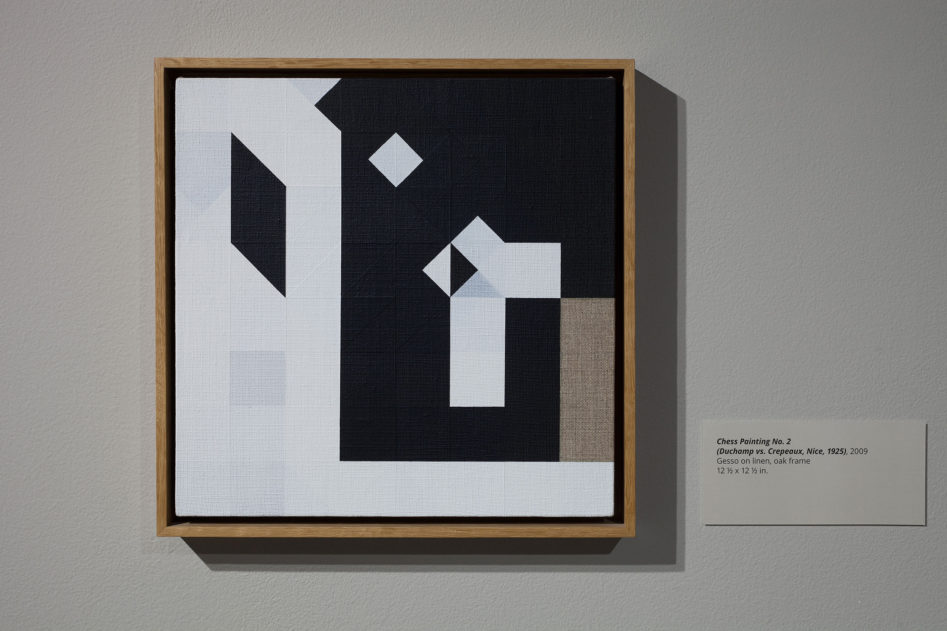Variations in the Key of Chess
Excerpt from Bradley Bailey’s catalogue essay
Upon first glance at the tessellated surfaces of Tom Hackney’s paintings, the mind’s eye is flooded with images by the artists that these canvases subtly recall. The austere sincerity of the neo-plastic explorations of de Stijl founders Piet Mondrian and Theo van Doesburg, the chance-based mathematical abstractions of François Morrelet, the visual assault of the early op-art works of Larry Poons, and the later prints of Anni Albers, rooted in the refined geometry of the experimental textile designs from her days at the Bauhaus, all bear distinct but distant formal resemblances to Hackney’s rectilinear arrangements of line, shape, and color. Indeed, all of the aforementioned artists have one very important compositional device in common: the grid, that game-changing organizational mainstay of modernism that freed early twentieth-century avant-garde artists from the bonds of illusionary spatial depth that had dominated painting since the Renaissance. As Rosalind Krauss observed in her frequently quoted essay on the subject, “[T]he grid states the autonomy of the realm of art. Flattened, geometricized, ordered, it is antinatural, antimimetic, antireal. It is what art looks like when it turns its back on nature.” In its utter self-referentiality, the grid is nothing other than itself, and in its unrelenting insistence on surface, it becomes a screen for the projection of pure idea and feeling, unencumbered by the trappings of the physical world. “I’ve always used grids as a transcriptional vehicle and a structural basis for thoughts and ideas,” Hackney recalled. “I feel it can also have neutrality which enables other elements and expressions to come to the fore.”
Bradley Bailey is Associate Professor of Art History at Saint. Louis University
Excerpt from Bradley Bailey’s catalogue essay, published on the occasion of the exhibition:
Tom Hackney
Corresponding Squares: Painting the Chess Games of Marcel Duchamp
Francis M. Naumann Fine Art, LLC
New York, March 18 – April 29, 2016
World Chess Hall of Fame
Saint Louis, MO, May 19 – September 11, 2016
Copies available from:
www.francisnaumann.com

![Corresponding Squares: Painting the Chess Games of Marcel DuchampInstallation view[photo © Austin Fuller courtesy of the World Chess Hall of Fame]](/assets/_947x667_fit_center-center/CorrespondingSquaresSTL_4.jpg)
![Corresponding Squares: Painting the Chess Games of Marcel DuchampInstallation view[photo © Austin Fuller courtesy of the World Chess Hall of Fame]](/assets/_947x667_fit_center-center/CorrespondingSquaresSTL_8.jpg)